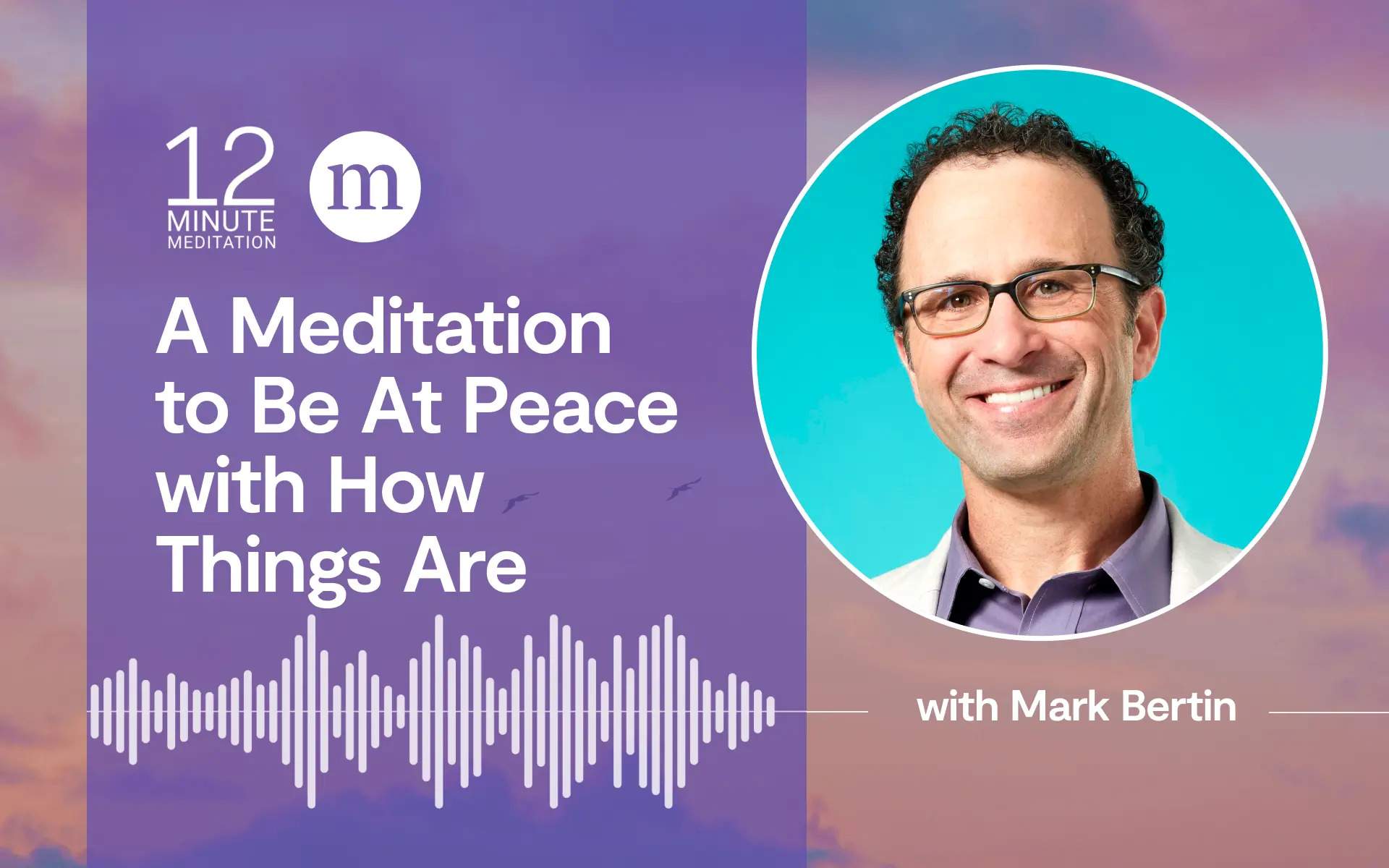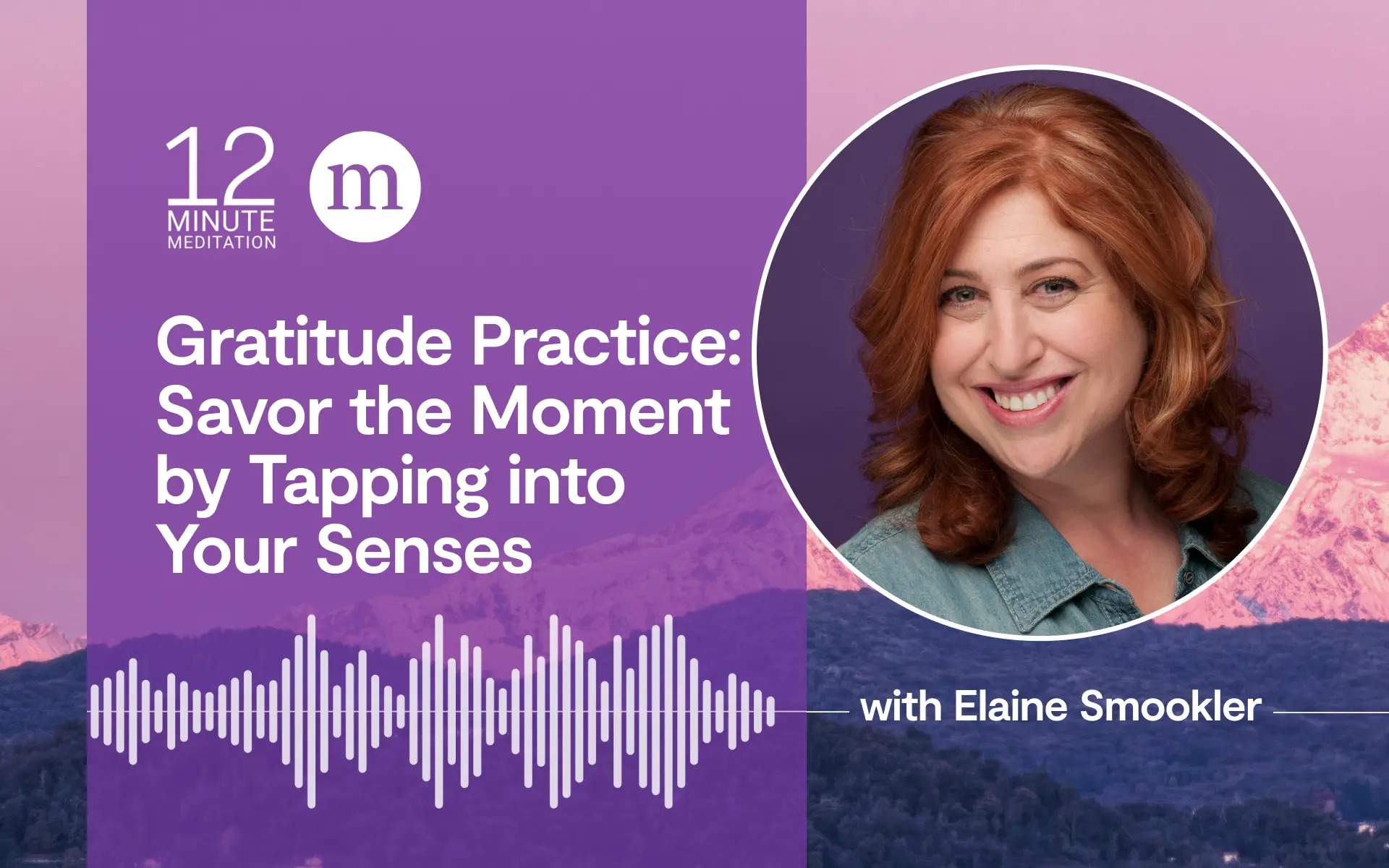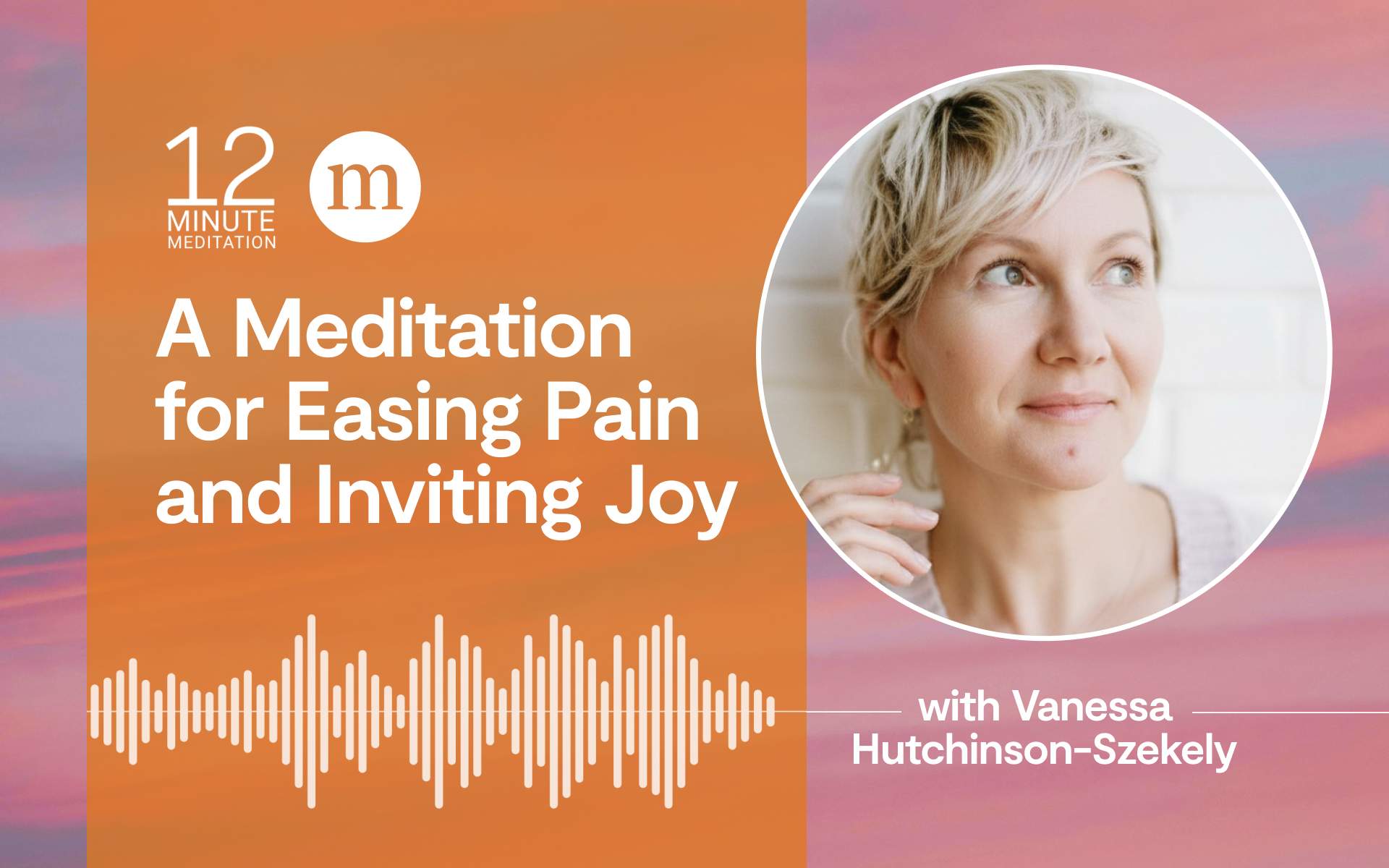This is a practice that is both concrete and compassionate. Dr. Bertin guides us to take note of our tendency to either deny or try and “fix” what’s going on in our lives, and then find a third way—one where we aim to see things as clearly as possible, so that our decisions are filled with awareness, skill, and care for everyone involved.
A Meditation to Be At Peace With How Things Are
Read and practice the guided meditation script below, pausing after each paragraph. Or listen to the audio practice.
- Start with finding a comfortable posture that you’ll be able to sustain for these few minutes of practice. Bring a sense of kind and patient awareness to our body first. Notice how you’re sitting. Make adjustments so that you feel awake and alert. Notice areas of tension, and see if you’re able to release them a little bit, gathering your awareness and bringing it to the sensation of breathing.
- Let go of any need to do anything or make anything happen right now. You can reframe moments where you become distracted from the breath as a success. The mind always stays busy. Things happen that draw our attention and awareness away throughout the day, and each moment you come to the breath is a moment of awareness, a moment of intention. When you get distracted, just remember this sense of intention with clarity. You can say to yourself, Oh, my mind is busy —and then let go and simply come back to the next breath.
- Next, expand your awareness to the entirety of your body. Most of us live with experiences of pleasure, and also moments of discomfort or pain at times. And if something definitively needs adjustment to relieve you of some physical pain right now, that’s always okay. But for anything else that’s either comfortable for you to work with or unchangeable in this moment, see if you can simply notice it, and then come back to the breath.
- Now, continue to use your breath lightly as an anchor, shifting your awareness to notice your emotional state. Emotions are part of our experience. They’re there whether we acknowledge them or not. They tend to influence how we think and how we interact with the world, so it’s empowering to cultivate a sense of open and caring awareness. Living peacefully with our emotions as they arise and pass is core to living at peace in the world. It’s also core to staying in touch with our best intentions, as emotions tend to drive the bus if we’re not paying attention to them.
- See if you can give yourself permission for these next few minutes to stay aware of your emotions. Offer care if they’re difficult. Offer compassion and give yourself permission to experience them at all. Let go of any need to fix or change them. Right now I’m experiencing happiness, or Right now I am experiencing sadness, or whatever emotions come to mind. Can you bring to this part of the practice a sense of compassion, too? Lean toward the intention to treat yourself as you would a young child or a close friend.
- Remember, if your mind gets distracted, there’s always the option of coming back to following the breath again.
- Now, let’s shift our awareness to thoughts. Thoughts can feel so all-consuming, and even through meditation, we can’t make them stop. That’s never the point. Rather, we’re asking if we can live more at peace with this part of our experience, recognizing we each have our own habits. We each make up stories, stories that try to make sense of our past or that project into the future. Problems can feel sticky and all-consuming and ruminative. So for these few minutes of practice, can we note thoughts simply as thoughts? Fears simply as fears. Fantasies simply as fantasies. Observe them like clouds passing in the sky, and also with a sense of peace and care. My mind is in an agitated state right now. This is really exhausting. Or at a different time maybe we experience a quieter mind, a simpler mind, noticing the thoughts as they arrive with more ease. But through the practice, simply noticing and naming: Oh, there is that thought, and then coming back to the breath again.
- The intention and perspective we bring to the practice is fundamental to the practice itself. Through the practice, we can aim to live life—even during exceedingly difficult times—with more awareness and compassion and self-care. This leads to a better ability to stay in touch with our own best intentions when we need to act precisely or communicate well. So when we practice, whatever happens will happen. But can we do our best to stay aware, to stay clear of thought, and to stay kind.
- As we bring our practice to a close, settle back into the breath for a moment. Then, perhaps set the intention to continue this sense of compassionate and kind awareness as you move on into the rest of your day.
Looking for mindfulness-based tools to live better with ADHD?
Together with ADHD Life Coach and Certified ADHD Educator Dana Crews, Dr. Bertin is leading a retreat October 10-12, 2025, to support adults navigating life with ADHD. Hosted at the Menla Retreat Center nestled in the serene Catskill Mountains, Held and Whole is a restorative and educational three-day ADHD retreat that will offer practical, mindfulness-based tools to strengthen emotional regulation, deepen self-awareness, and foster authenticity.
You can get more information and reserve your spot here. Plus, listeners to this podcast can claim a limited-time 15% early bird discount when they enter code “Mindful” at checkout. Spots are limited!








